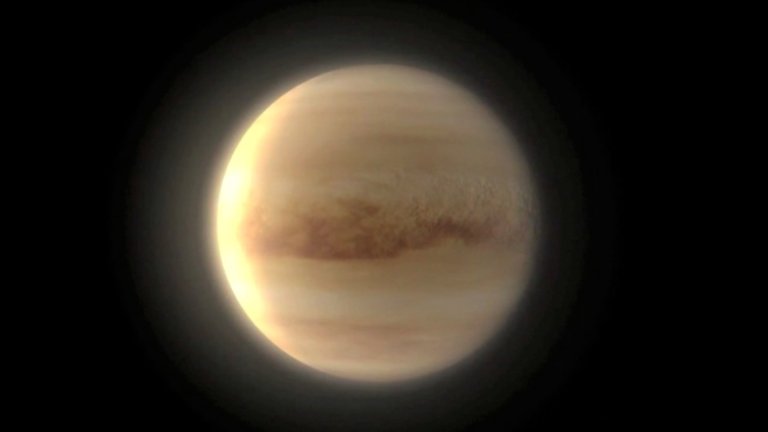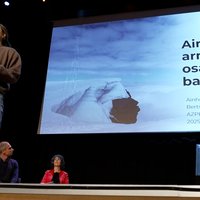Venus, the nearest neighbor
The phrase so close and so far accurately describes the relationship between Earth and Venus. It’s often called the twin of the planet we live on, but it’s incomparable. Recently we have also begun to unravel the mysteries of Venus, which despite its proximity, well preserves its secrets. This is what Itziar Garate of the Planetary Sciences Group of the UPV/EHU is working on:Investigate the atmosphere of Venus.

Venus, the twin planet of the Earth, is like a neighbour known by sight and name: little is known about its way of life.
ITZIAR GARATE; Planetary Sciences Group, UPV/EHU: They are planets born under similar conditions, in terms of size and mass, so very similar in terms of gravity, then it was expected to be the most similar planet, and in some aspects it is, but in others it is completely different, why? what happened on Venus and not on Earth or vice versa, what happened on Earth and not on Venus?
Astrophysicist Itziar Garate is looking for answers to these questions. He is a member of the planetary science team at the University of the Basque Country and investigates the atmosphere of Venus.
It's the celestial body closest to us after the moon, it's 40 million kilometers away... alone. So it’s easy to see Venus, it’s the brightest element in the sky behind the sun and moon. This is probably why it was known to all ancient civilizations. And yet, a few years ago, Venus began to unravel its mysteries: it was discovered in 1961, for example, that it turns in the opposite direction to the rest of the planets in the solar system, and has since evolved into knowledge.
ITZIAR GARATE; Planetary Sciences Group, UPV/EHU: The atmosphere is very dense, it is very thick, because it is made of 96% carbon dioxide, completely breathable and this thick atmosphere makes the dune capture the sunlight, creating an incredible greenhouse effect. There is a temperature of almost 500°C and a pressure of 90 atmospheres, equal to the pressure at a depth of 1 km in the ocean, the atmosphere weighs so much and it is so hot that we would not survive there and also the clouds are not made of water, they are clouds of sulfuric acid. Volcanoes, sulfuric acid, carbon dioxide,... hell!
Knowing all this has not been easy. Since the beginning of the exploration, few probes have managed to reach the surface of Venus: crossing the atmosphere is too difficult. Just imagine, there are these pictures of the skin of Venus from 40 years ago. Therefore, in the last missions, another strategy is used, which is the acquisition of information and images from a little further. The images are the research material of the Itziar.
ITZIAR GARATE; Planetary Sciences Group, UPV/EHU: For example, images can be images at different wavelengths, images taken using different filters, and in this comparison we can know how high the clouds are in the atmosphere by comparing an ultraviolet image with a visible image.
Thus, the team of planetary sciences has made interesting discoveries about the atmosphere of Venus. This is a strange phenomenon at the planet’s south pole: the double vortex.
ITZIAR GARATE; Planetary Sciences Group, UPV/EHU: Horizontally as far as Europe and 20 km high, then they are impressive structures but they are changing every day and why we don’t know.
More is now known about the neighbor next door, but the answers found only raise more questions.
ITZIAR GARATE; Planetary Sciences Group, UPV/EHU: Like a kulebroi, the more I know, the more I need to know, the more I want to know things and work and move on. I like it more and more, more and more... I’m not going to say more in love but more fascinated.
Buletina
Bidali zure helbide elektronikoa eta jaso asteroko buletina zure sarrera-ontzian










